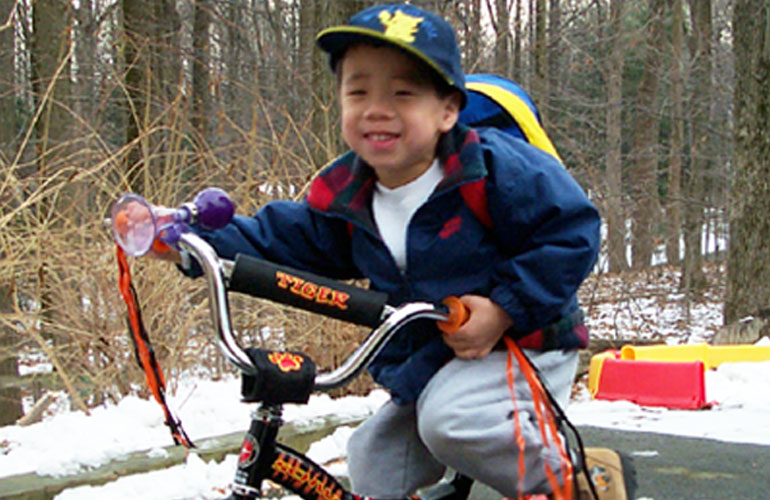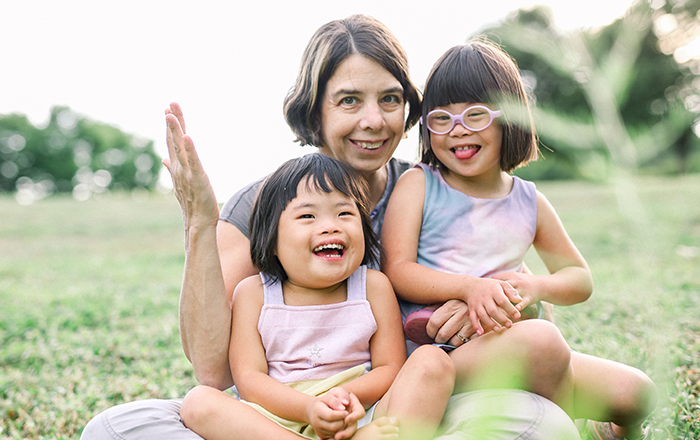I fell in love with Seth’s serious little face the moment I saw his referral picture. When his escort came through customs carrying him, I recognized my five-month-old son immediately and stepped right over the rope barrier to gather him in my arms. At that moment, Seth looked solemnly into my face and I burst into tears.
I was already raising our older son (six years old when Seth arrived), so I thought I knew just how to settle this adorable baby into our family. It started off much as I thought it would. Seth didn’t like the Snugli or being held while he slept, so we put his playpen in the family room to keep him near us.
I went through the typical second-child worries: Would I be able to give each child what he needed? Would Seth and Jason become friends?
I didn’t have time to dwell on all of that, however, as Seth developed a serious upper respiratory infection within days of his arrival. We spent many long nights sleeping on a mattress on the floor of his room. Still, I predicted we’d be through most of our adjustment within about two months.
But one thing troubled me: Seth never cried. When he needed us, he either banged his head on the floor or screamed at the top of his lungs.
What Did It Mean?
Our pediatrician said that some babies were “just like that.” The adoption agency said they’d never seen a baby act like this before. I wanted to know if it was about adoption or about Seth, so I read every book I could find. They all said the same thing: Some babies bang their heads.
Dr. Spock, Penelope Leach, T. Berry Brazelton — none of them told me what I wanted to know: Was Sethie simply a normal, happy baby who sometimes banged his head, a baby who banged his head to cope with the stress of a new environment, or a baby who had a more long-term problem?
I was heartened by the fact that Seth interacted well with all of us, was alert and tuned-in to his surroundings, smiled readily, and easily met all his developmental milestones. He just never cried. We couldn’t put him down when he was tired or leave him in his crib when he was waking up without his repeatedly, soundlessly banging his face into the floor.
Life became very stressful. I didn’t want to pick Seth up every time he pounded his head, because I didn’t want him to learn that this was the way to get our attention. Then again, I couldn’t leave him to thud — I worried he’d hurt himself.
The pediatrician repeated that some kids just did that, and suggested putting padding under his face when we put him down. (I didn’t, because I was afraid he’d suffocate.) My husband wasn’t sure what to do. I became frantic, worried, exhausted.
Finding a Way to Help
Three weeks after Seth came home, I was doing laundry when a loud repetitive pounding sound intruded over the noise of the running water. I stepped out to tell Jason to stop bouncing his basketball in the kitchen — only to be met by the eerie sight of Sethie slamming his face into the floor over and over again.
It hit me then and there that the “why” of Seth’s head banging was not the issue. And it didn’t matter if “some babies bang their heads.” This baby had a problem, and this baby needed his mom to help him.
I tried warm baths before bedtime. I tried music at naptime. I tried rocking him to sleep and then putting him into the crib. No dice. His screaming was nearly as unnerving as his head banging.
There were many days when I thought I would lose my mind. My husband took Seth for walks in the stroller after work. Some days Seth and I would pick up Jason after school and just ride around in the car.
Finally, I decided that if Sethie wasn’t going to cuddle up to us for comfort, I was going to hold him anyway, and let him bang his head on me. For the next four months, every time I heard him start to bang his head, I would pick him up and rock him as he silently hit his head on my lap, or my shoulder, or my chest.
Sometimes while we rocked, I cried for both of us. Sometimes I told him the story of the day he arrived. Sometimes I just hummed. I didn’t know what else to do for him.
One night, about six months after his arrival, I woke to an unfamiliar sound: Sethie was crying! I ran to him, and he was sitting there in his crib, not screaming, but bawling his eyes out. I went over and he reached out for me to pick him up.
He snuggled into my shoulder and we sat down to cry together. He looked at me with those intense eyes, and I knew we’d reached a milestone. I didn’t know what would come next, but I knew this: Seth was, at last, truly home.



